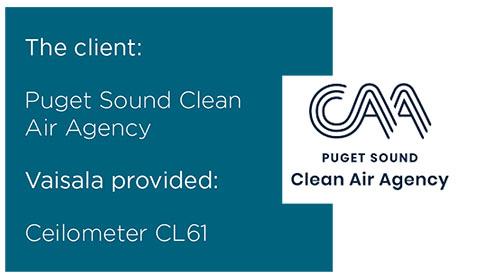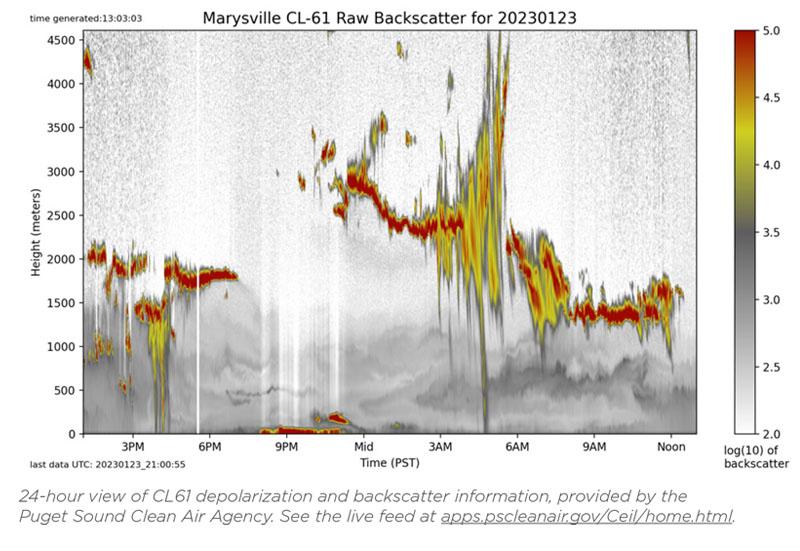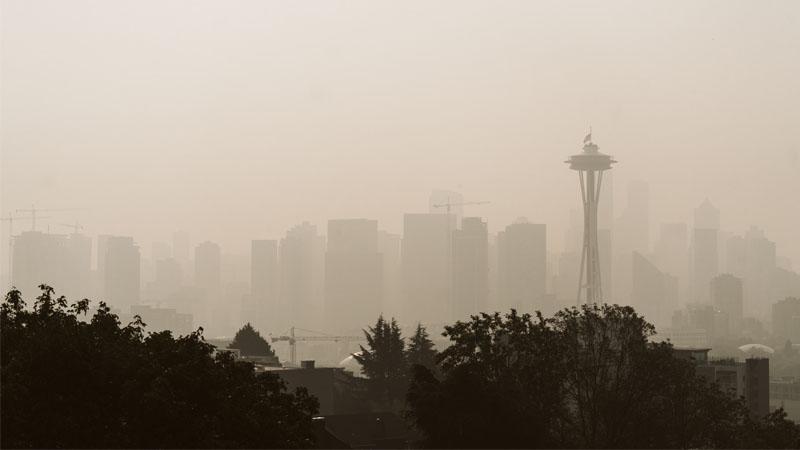New air quality insights on wildfire smoke using ceilometers
How the Puget Sound Clean Air Agency is gaining air quality insights and better informing the public with Vaisala ceilometers.

Determining the presence of smoke
Puget Sound, Washington is a busy area — and often a smoky one. Surrounding the second largest estuary in the USA and the greater Seattle urban corridor, the Puget Sound region has more than four million residents, and many of them use wood burning stoves to heat their homes in winter. Wood smoke contains PM2.5, which can be hazardous to breathe in high concentrations.
The Puget Sound Clean Air Agency keeps close track of air pollution levels and mitigation measures to protect public health, and informs citizens of current air quality and pollutants. When the amount of wood smoke in the air exceeds air quality standards, they issue temporary burn bans to help clear the air. One challenge in air quality monitoring is that nighttime temperature inversions trap smoke near the ground and let pollution quickly reach unhealthy concentrations. Identifying this phenomenon with only ground- level measurements can be difficult or impossible.
Another air quality challenge had emerged more recently — a significant increase in summer wildfires in the surrounding thick forest. The agency used to turn off the ceilometer at the end of the heating season, but leaving it run one summer led to surprising insights as the ceilometer indicated the presence of smoke well above the ground from distant wildfires.
With more summer wildfires and continued winter wood burning, measuring and tracking air quality from all types of wood smoke became an urgent priority for the Puget Sound Clean Air Agency so they could alert the public to hazardous air conditions. The agency had been using a Vaisala Ceilometer CL31 to study low-level air pollution but discovered they could also see some indications of smoke well above the ground. Though limited in scope, the new data helped to expand their air quality measurements and prompted them to begin working with the National Weather Service to obtain similar data from their network of ceilometers.
Unprecedented insights through high signal-to-noise and depolarization
With the Vaisala Ceilometer CL61, the Puget Sound Clean Air Agency was finally able to get the depth of insight they’d been searching for. The lidar-based CL61 features a high signal-to-noise ratio and groundbreaking depolarization for advanced particulate differentiation, and is the first of its kind to offer this capability. The depolarization values are key because they help distinguish smoke plumes from clouds and other aerosols. The CL61 provides accurate boundary layer measurement and detects smoke, dust and volcanic ash layers. Innovative features such as single-lens optics reliably detect low-altitude phenomena such as clouds and shallow aerosol layers — 24/7 in all weather conditions, all in a cost-efficient design.
The CL61 proved itself in its first season of service: At the start of the summer, the agency was able to identify and track wildfire smoke plumes as they crossed into the area, including their height and concentration. Other ground-level sensors indicated clear conditions, but it was obvious that there was a lot of smoke higher in the air. With information from the CL61, forecasters could understand the current state of the atmosphere and forecast the smoke mixing down to the surface later in the day.
Accurate data and modeling for public safety
The Puget Sound Clean Air Agency can now develop far more accurate smoke prediction models, which had never before been possible. With the purchase of a second Ceilometer CL31, the agency now has three ceilometers which act as a sort of smoke radar — a unique concept with strong potential for current and future use.
Seeing is believing, and the visualization provided by the CL61 makes it easy to quickly grasp what’s happening in the air. In fact, the agency has made the 24-hour visualization available for public view on their website which has been featured by a local news channel.
No matter what kind of smoke is in the air, the Puget Sound Clean Air Agency has the information they need to track the pollution and keep the public well-informed.
"Every wildfire is different from the location to the concentration of smoke, which makes modeling especially challenging. With the Ceilometer CL61, we get a much clearer understanding of current and emerging conditions and can give more accurate air quality conditions and alerts to the public. This gives vulnerable groups the ability to avoid hazardous conditions, which helps everyone year- round."
Phil Swartzendruber, Ph.D., Air Quality Scientist, Puget Sound Clean Air Agency


